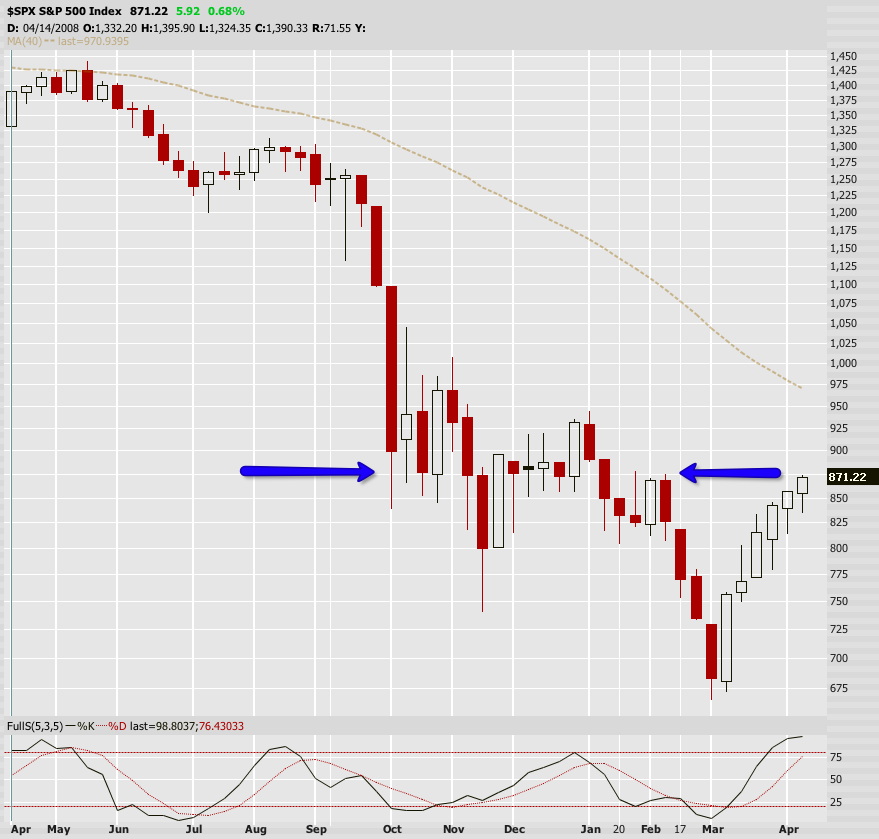Bearish Monthly RSI Divergence 100% Accuracy Rate; Occurred at 91 6% of Stock Market Tops
Post on: 16 Март, 2015 No Comment

Relative Strength Index is one of the most widely recognized and followed technical indicators. The most common use of RSI is the identification of divergences:
Developed J. Welles Wilder, the Relative Strength Index ( RSI ) is a momentum oscillator that measures the speed and change of price movements. According to Wilder, divergence s signal a potential reversal point because directional momentum does not confirm price. A bullish divergence occurs when the underlying security makes a lower low and RSI forms a higher low. RSI does not confirm the lower low and this shows strengthening momentum. A bearish divergence forms when the security records a higher high and RSI forms a lower high. RSI does not confirm the new high and this shows weakening momentum. StockCharts.com
The monthly chart of Dow Jones Industrial Average has registered a bearish divergence at the 2011 and 2012 highs:
I went through the monthly data on INDU going back to 1971. In 100% of occurrences of the signal an average decline of 27.9% lasting an average period of 10.8 months resulted. Since 1971 in all 11 occurances of a bearish monthly RSI divergence a significant decline of at least 16% followed. There was only one top of significance that did not register this signal and that occured in 1973. That means that during a forty year period starting in 1971, 91.6% of all significant tops recorded this technical signal. That is a period that encompasses two bear markets and a major bull market as well, which means there is a firm record of this technical condition resulting in serious bear markets under a wide range of well identified market conditions.
Here’s a list of the tops regsitering a monthly RSI divergence and the subsequent percentage decline. Click on the link to see a chart of the occurrence:
YEAR, PERCENT DECLINE, DURATION OF DIVERGENCE, MONTHS OF DECLINE
- The average percentage decline is 27.9%
- The average duration of the bearish divergence (difference in the number of months between each price top) is 7.91 months.
- The average numbers of months of the decline is 10.8
- The average monthly decline is 3.58%.
- Removing the outliers of 54% and 16% the average percent decline is 26.13%
- Removing the outliers of a 16 month divergence in 1987 and a 4 month in 1981, the average duration of divergence is 7.4 months.
- Removing the outliers of 34 months and 2 months, the average length of decline is 7.5 months.
The current bearish monthly divergence took 11 months to develop, about 3.5 months longer than average. This is the second longest build to a bearish monthly RSI divergence, the first being the 16 month period leading up to the 1987 top and decline of 41%. The current market is only 5 weeks off the divergent price top or 38 weeks short of the average and the maxium decline to date is about 9.8% or 18.1% less than the average drop. Altogether this suggests the probability of considerable more downside in terms of time and price yet to come in this bear market.
The nearest Fibonacci retracement percentage level of the prior wave which it corrected for each signal is shown:
1976-1978 61.8%
1980 100%
1981-1982 78.6%














